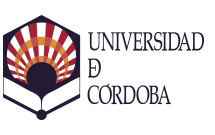On-farm assessment of yield and quality traits in durum wheat
Autor
Tabbita, Facundo
Ortiz-Monasterio, Iván
Piñera-Chavez, Francisco J.
Ibba, Maria Itria
Guzmán, Carlos
Editor
WileyFecha
2023Materia
Wheat qualityOn-farm
GGE analysis
Flour yellowness
METS:
Mostrar el registro METSPREMIS:
Mostrar el registro PREMISMetadatos
Mostrar el registro completo del ítemResumen
BACKGROUND:
Durum wheat is key source of calories and nutrients for many regions of the world. Demand for it is predicted to increase. Further efforts are therefore needed to develop new cultivars adapted to different future scenarios. Developing a novel cultivar takes, on average, 10 years and advanced lines are tested during the process, in general, under standardized conditions. Although evaluating candidate genotypes for commercial release under different on-farm conditions is a strategy that is strongly recommended, its application for durum wheat and particularly for quality traits has been limited. This study evaluated the grain yield and quality performance of eight different genotypes across five contrasting farmers’ fields over two seasons. Combining different analysis strategies, the most outstanding and stable genotypes were identified.
RESULTS:
The analyses revealed that some traits were mainly explained by the genotype effect (thousand kernel weight, flour sodium dodecyl sulfate sedimentation volume, and flour yellowness), others by the management practices (yield and grain protein content), and others (test weight) by the year effect. In general, yield showed the highest range of variation across genotypes, management practices, and years and test weight the narrowest range. Flour yellowness was the most stable trait across management conditions, while yield-related traits were the most unstable. We also determined the most representative and discriminative field conditions, which is a beneficial strategy when breeders are constrained in their ability to develop multi-environment experiments.
CONCLUSIONS:
We concluded that assessing genotypes in different farming systems is a valid and complementary strategy for on-station trials for determining the performance of future commercial cultivars in heterogeneous environments to improve the breeding process and resources.

